Above: Photo by Michael Brewer.
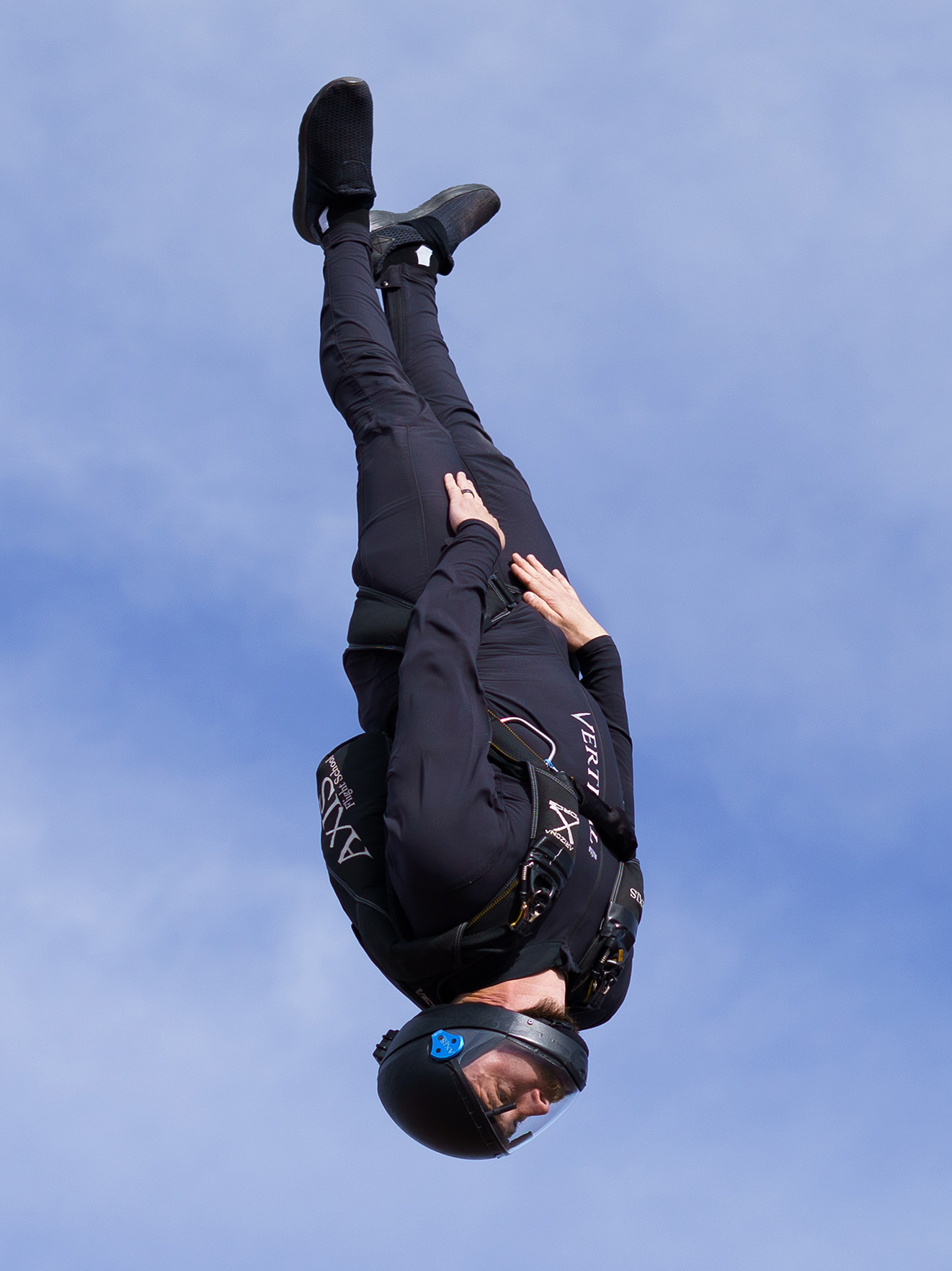 Racecar driver Mario Andretti once said, “If everything seems under control, you’re just not going fast enough.” Skydivers exercise control through drag, which is a force that slows them down. Here, Daniel tries to fly as quickly as possible by balancing in the head-down orientation (at a dive angle between 83 and 87 degrees) and making the smallest possible number of inputs.
Racecar driver Mario Andretti once said, “If everything seems under control, you’re just not going fast enough.” Skydivers exercise control through drag, which is a force that slows them down. Here, Daniel tries to fly as quickly as possible by balancing in the head-down orientation (at a dive angle between 83 and 87 degrees) and making the smallest possible number of inputs.Speed skydiving is the fastest non-motorized sport on earth, with competitors reaching velocities as high as those of Top Fuel dragsters, the quickest accelerating racing cars in the world. With the amount of energy a speed skydiver produces, those on the ground can actually hear the jumper pulling out of a dive!
The sensations you experience speed skydiving are unlike anything you’ll experience on other types of skydives. The wind screams past your helmet. The faster you go, the more pronounced the air resistance becomes on your head and shoulders. You’ll feel the skin friction, and your suit will feel like it’s tugging toward your feet, all while you’re trying to avoid the wobbles as you travel at a significant fraction of Mach. You may even lose your shoes if you haven’t secured them well enough! The physical sensations combined with the challenge of performing better than your last jump makes for a fun 25-second skydive.
Speed skydiving is one of the most accessible and inclusive disciplines. You don’t need to assemble a team or find a camera flyer. You can exit from any aircraft. Although experience with freeflying, angle flying and tunnel flying can help you gain the highest speeds, you do not need to be a freeflyer to participate. You can fly in any orientation and posture you like, as long as you can remain on a controlled path perpendicular to jump run.
Skydiver’s Information Manual Section 6-13 lists the following qualifications for making a speed skydive:
" 1| Hold a USPA C license or higher.
2| Have made a minimum 200 jumps.
3| Maintain consistent awareness of altitude and location over the ground.
4| Jumpers must have their gear inspected by a qualified person.
5| Consult a local S&TA or DZO on:
- the terrain and alternate landing areas around the DZ
- exit order
- navigation (move in the correct direction and ability to deploy at the planned altitude and location).
- communication with drop zone authorities, other jumpers and aircraft pilot (to determine jump run and spot)
- understanding weather (including reading a winds-aloft forecast and maintaining awareness of clouds before jumping)
- Jumpers must make a flight plan that includes exit orders, flight plans during freefall, breakoff and canopy flight path, to avoid other groups"
You also don’t need a lot of specialty equipment aside from a GPS-based speed-measuring device, although you must ensure your standard equipment is suitable for the discipline (see SIM Section 6-13 for details), and wear two audible altimeters and one visual altimeter to maintain altitude awareness.
Speed skydiving is incredibly satisfying, since it allows you to see yourself improve through tangible evidence. Since a speeder is not allowed to wear weight to increase their density, they must rely on technique and equipment choices. While flying in the head-down orientation, the cross-sectional area presented to the relative wind is similar for most competitors, with the limiting factors being the helmet and shoulders. Therefore, the most significant difference comes from an athlete’s balance, streamlined shape and reduced skin friction. Exit technique also plays an important role. The quicker a speeder can accelerate, the more they can take advantage of the less-dense air at higher altitudes. Elite-level competitors do not reach terminal velocity, as they continue accelerating until breakoff.
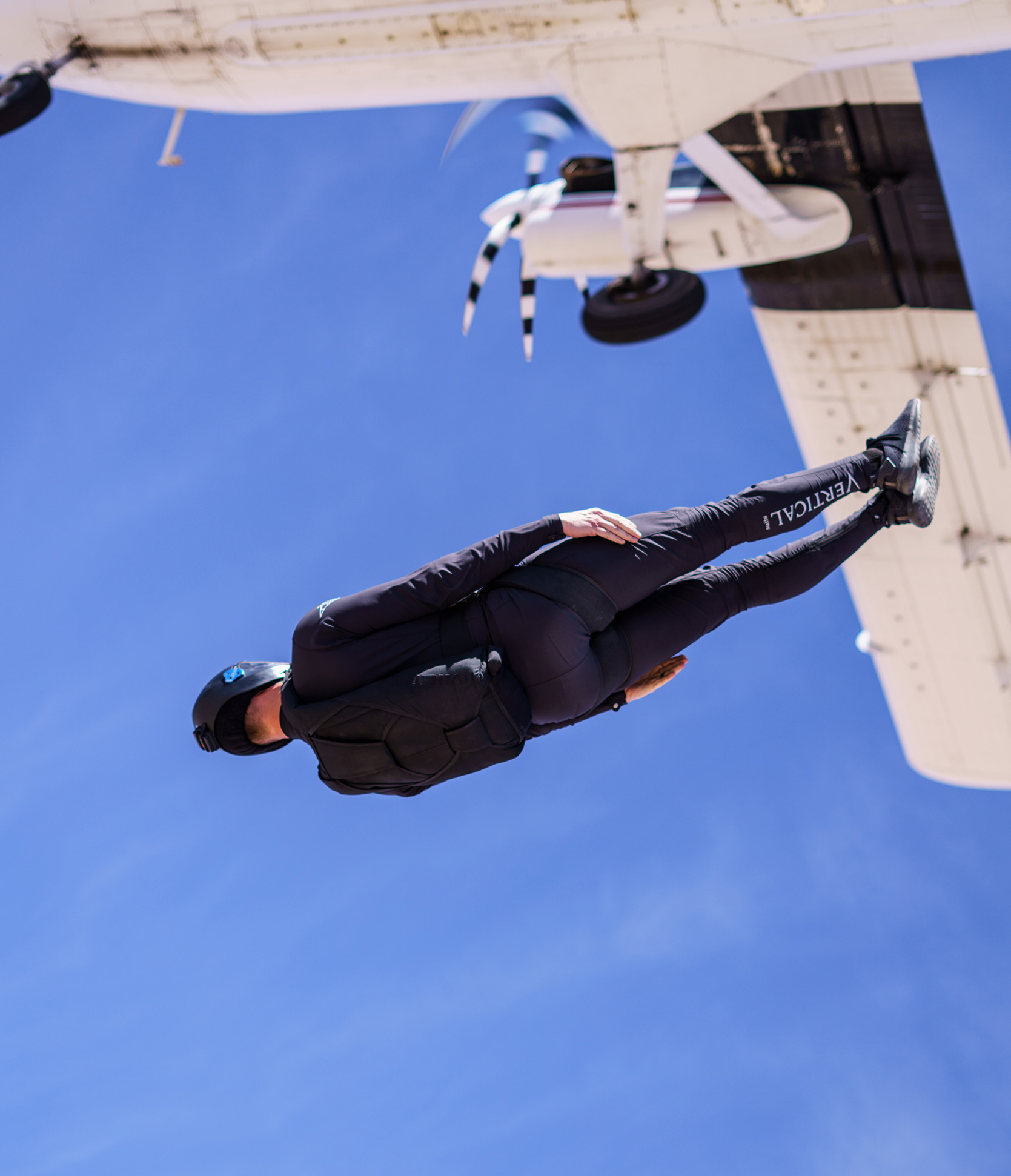
During the first 4 seconds after exiting, Daniel generates a slight amount of down force by directing the relative wind upward, maximizing acceleration by taking advantage of the lower air density at higher altitudes. Photo by Michael Brewer.
Ever Faster
The discipline is also rapidly evolving, making it an exciting time to get started. Top competitors can regularly surpass 500 kmh (311 mph), but beginners usually reach speeds in the low-200-mph range. German skydiver Marco Hepp set the current world record speed skydive—529.77 kmh (329.18 mph)—at the 2022 Fédération Aéronautique Internationale World Championships at Skydive Arizona in Eloy. At this meet, 10 competitors broke 500 kmh, with three doing so in every round. Recent research by Steffen Schölzel, Andreas Henze and Anne-Marie Schreyer, an aerospace team at Achen University of Technology in Germany, suggests that athletes may reach speeds of more than 600 kmh within the decade.
The German researchers’ paper, “Numerical Analysis of the Flow Around a Speed Skydiver”, used computational fluid dynamics to analyze several important parameters that contribute to a speed skydiver’s performance. They discovered two regions of large-scale airflow separation that contribute to drag force: the athlete’s neck as the flow separates from the helmet, and the glutes where the airflow separates from the rig at the bottom of the container. These important insights are sure to move the discipline forward by assisting athletes who wish to refine their flying techniques and by inspiring gear manufactures to make equipment innovations.
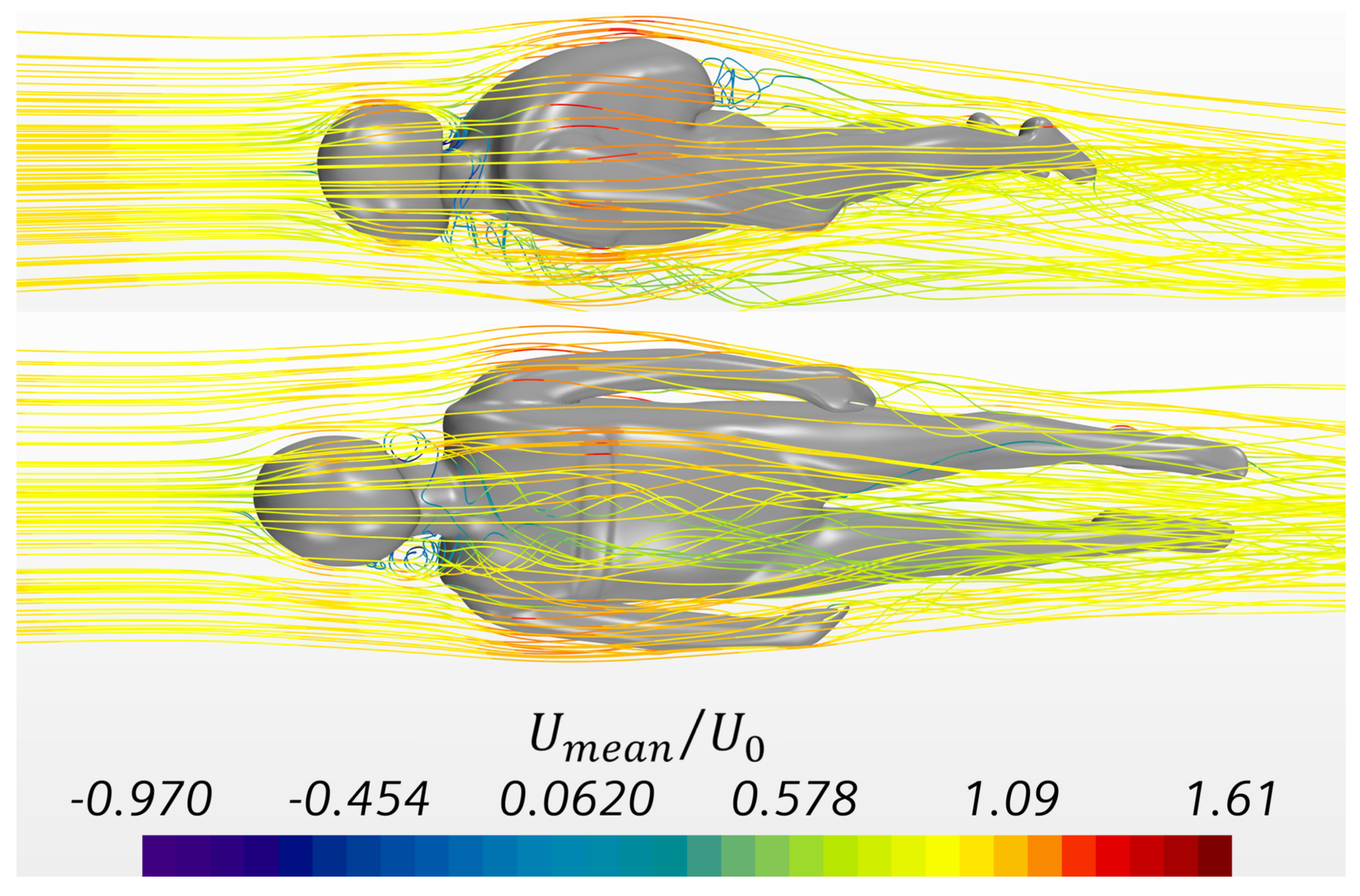
Computational fluid dynamics models from the paper “Numerical Analysis of the Flow Around a Speed Skydiver” illustrate the areas of drag forces.
Competition Basics
This year’s USPA Nationals at Skydive Paraclete XP in Raeford, North Carolina, will feature the speed skydiving event from September 14-17. You might want to start training and give it a try! The event is a qualifier for membership on the U.S. Speed Skydiving Team that will attend the 2024 FAI World Championships in Bar Yehuda, Israel. The team will contain up to eight members: the top male competitor and top female competitor and then up to six more slots based on standings without regard to gender.
Another incentive is that the International Skydiving Commission of the FAI switched from using barometric readings to GPS readings to judge speed skydiving, due to barometric devices being inaccurate at higher speeds. As a result, the ISC archived records set prior to the 2019 rule change, opening opportunities for competitors to set new state, continental and world competition records.
The International Speed Skydiving Association’s website, issa.one, contains lots of information for those interested in pursuing the sport. Could you be the next person to climb ISSA’s Eternal Rankings list or join the “500 Club”? The full FAI rules for competition speed skydiving are available at tinyurl.com/45ucfh2x, but here are some competition basics:
- The standard exit altitude is between 13,000 ft. (3,962 meters) and 14,000 ft. (4,267 meters).
- The breakoff altitude is 5,600 ft. (1,707 meters) and no speed measurements are considered below that altitude.
- The performance window is the scoring part of the speed jump, which starts at exit. The end of the performance window is either 7,400 ft. (2,256 meters) below exit or at breakoff altitude, whichever the jumper reaches first.
- The score for a speed skydiving jump is the average vertical speed in kilometers per hour (to the nearest hundredth of a km/h) of the fastest 3 seconds within the performance window.
- Competitors may not wear additional weight on their body, in any of their equipment or on any of their equipment.
- A GPS-based speed measuring device mounted on the skydiver’s helmet determines the vertical speed.
- The event consists of eight rounds.
- The total of the competitor’s single scores is used to determine the competitor’s final result. The competitor with the highest score is the winner.
- Participation in the event at a USPA Nationals requires a USPA C License.
Even if you’re not shooting for making the U.S. Team or setting records, at the very least, you’ll have tons of fun. So, what is stopping you?
Watch the AXIS video short "What is Speed Skydiving?".
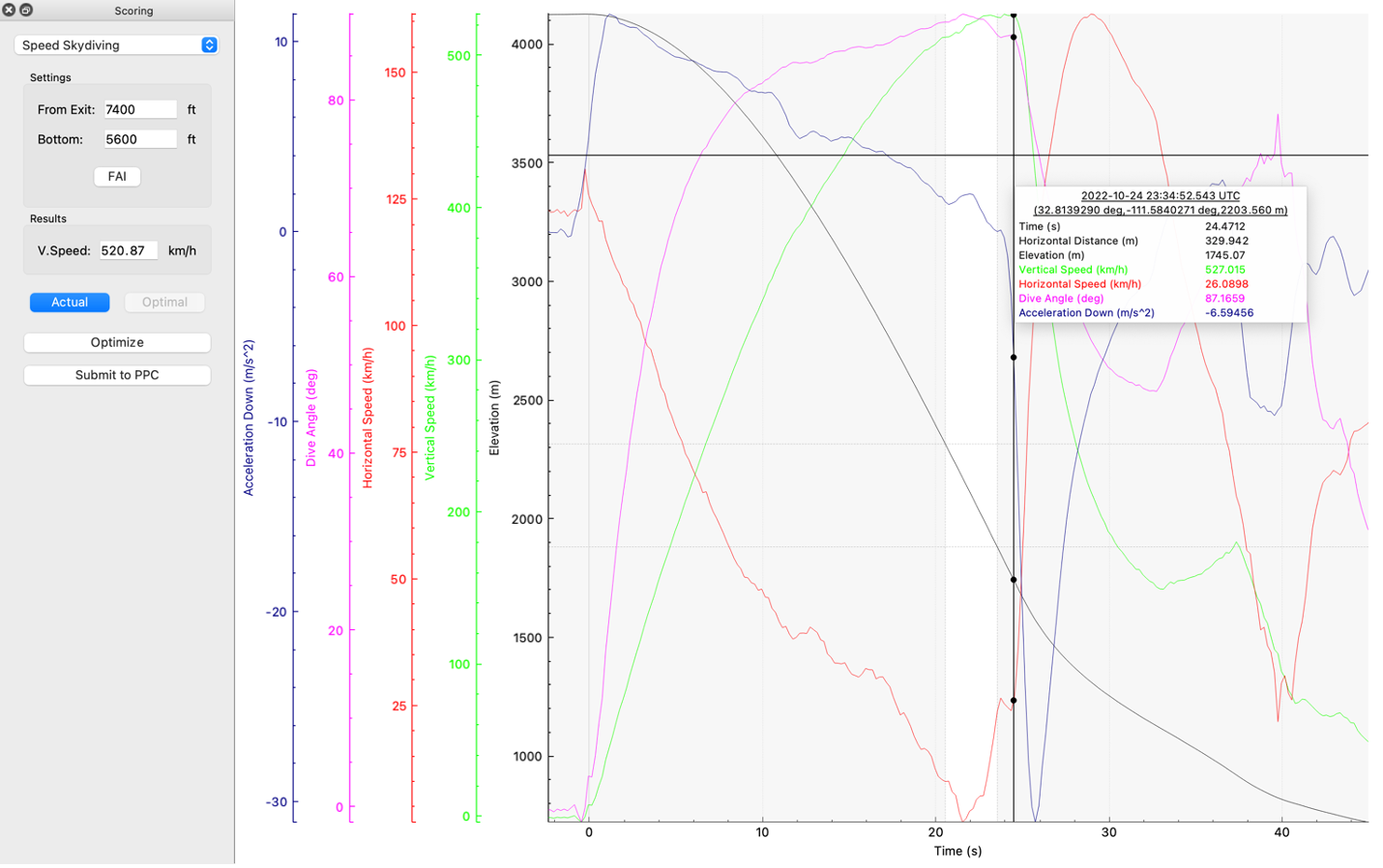
Niklas Daniel’s Flysight speed-measuring device displays a graph of his performance in round 8 of the 2022 world championships. The white vertical bar is the 3-second performance window.
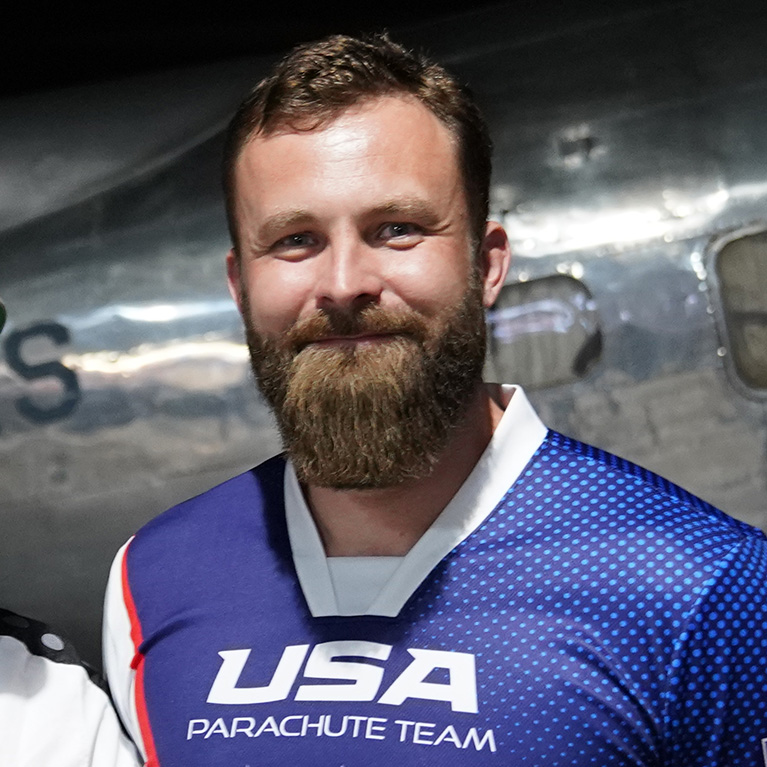 About the Author
About the Author
Niklas Daniel, D-28906, is co-founder of AXIS Flight School , located at Skydive Arizona in Eloy. He is the current U.S. Speed Skydiving National Champion and FAI Team Speed Skydiving World Champion, and earned the open and male silver medals at the 2022 FAI Speed Skydiving World Championships.